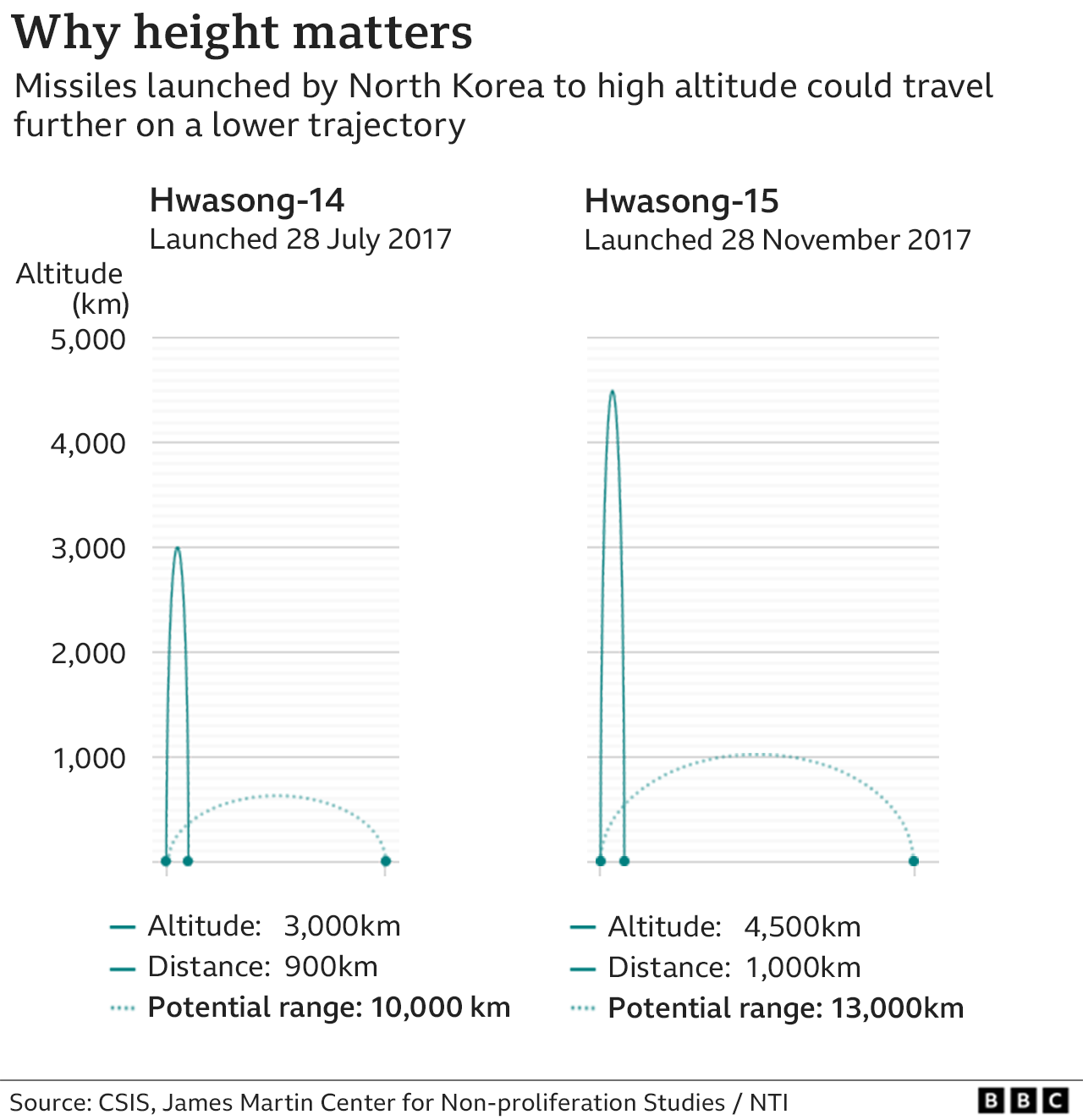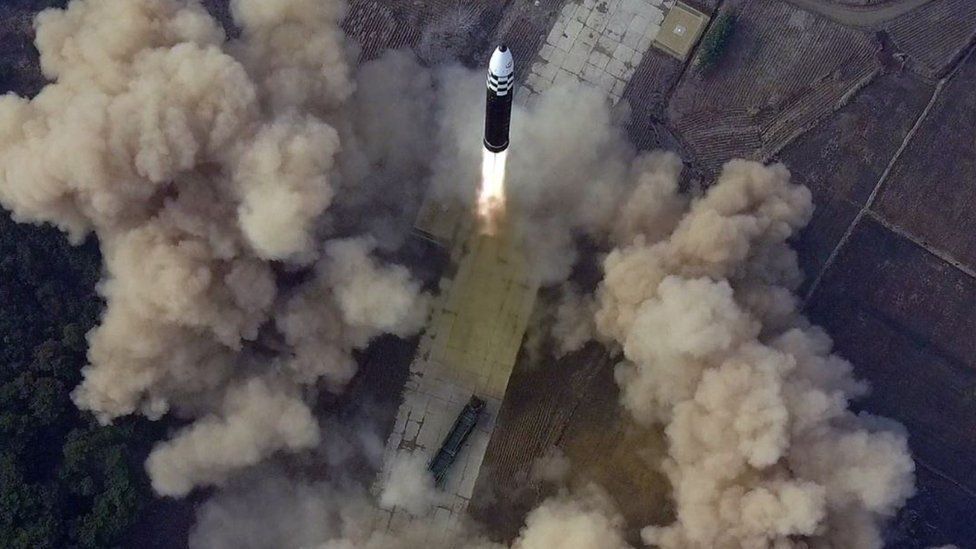North Korea has announced that it successfully launched its largest intercontinental ballistic missile (ICBM) in a test on Thursday.
The Hwasong-17 was first unveiled in 2020 at a parade where its colossal size surprised even seasoned analysts.
Thursday’s launch marked the first time the country tested a ICBM since 2017.
ICBMs are long-range missiles, capable of reaching the US. N Korea is banned from testing them and has been heavily sanctioned for doing so before.
State media said leader Kim Jong-un directly guided Thursday’s test and the weapon was key to deterring nuclear war.
Ankit Panda from the Carnegie Endowment for International Peace called the launch a “significant milestone” for North Korea’s nuclear arsenal.
“This test was long telegraphed and continues North Korea’s efforts to improve its nuclear deterrent,” he told the BBC.
Thursday’s missile launch was tracked by militaries in Japan and South Korea – Japanese officials said it flew to an altitude of 6,000 km (3,728 miles) and fell in Japanese waters after flying for more than an hour.

Its altitude surpasses that of a previous missile – the Hwasong-15 – which reached an altitude of 4,500km (2,800 miles) in a series of tests carried out by North Korea in 2017.
Experts estimated the Hwasong-15, if it had been fired on a standard trajectory, could have travelled more than 13,000km (8,080 miles), placing any part of the continental United States within reach.
The new missile would be able to travel higher and further than this.


This is a big missile. Huge.
As one analyst described it: “A monster missile”.
It is believed to be the largest mobile ICBM designed to carry multiple warheads.
The international community had been warned this was coming.
Kim Jong-un first showed off this missile at a military parade in October 2020 and state media had mentioned several times that the pause in long range missile tests was over.
The next steps also feel familiar. The United States and its allies will issue condemnation, there will be further sanctions placed on North Korea, there will be discussions about diplomacy and perhaps co-co-ordinating with China in the hope that Beijing can influence neighbouring Pyongyang.
We’ve been here before.
And yet Kim Jong-un, while under strict international sanctions and a self-imposed blockade at the border to prevent the spread of the pandemic, has managed to build weapons that go further and faster.
As state media said – this ICBM is seen as a “necessary deterrent”. The regime has made it a priority even as it tackles a “grave” economic crisis.
Pyongyang is determined to be seen as a nuclear power, as part of the elite nuclear club and most analysts believe more tests are coming.
Something the international community is unlikely to ever accept.
The Biden administration has understandably been busy. North Korea has not been a priority.
The real headache, if Washington chooses to take on this challenge, is what more can they do that hasn’t already been done.

The latest test comes after a flurry of missile tests in recent weeks, some of which the US and South Korea said were in fact parts of an ICBM system. Pyongyang claimed these were satellite launches at the time.
The ICBM test is being seen as a major escalation by the North and has been condemned by the UN, its neighbours and the US.
The United States called it a “brazen violation” of UN Security Council resolutions.

“The door has not closed on diplomacy, but Pyongyang must immediately cease its destabilising actions,” White House spokeswoman Jen Psaki said.
UN Secretary General Antonio Guterres called the launch “a significant escalation of tensions in the region”, while South Korean president Moon Jae-in said it was a “breach of the suspension of intercontinental ballistic missile launches promised by Chairman Kim Jong-un to the international community”.
After the launch, state media quoted Mr Kim as saying that the country was preparing for a long confrontation with US imperialism.


